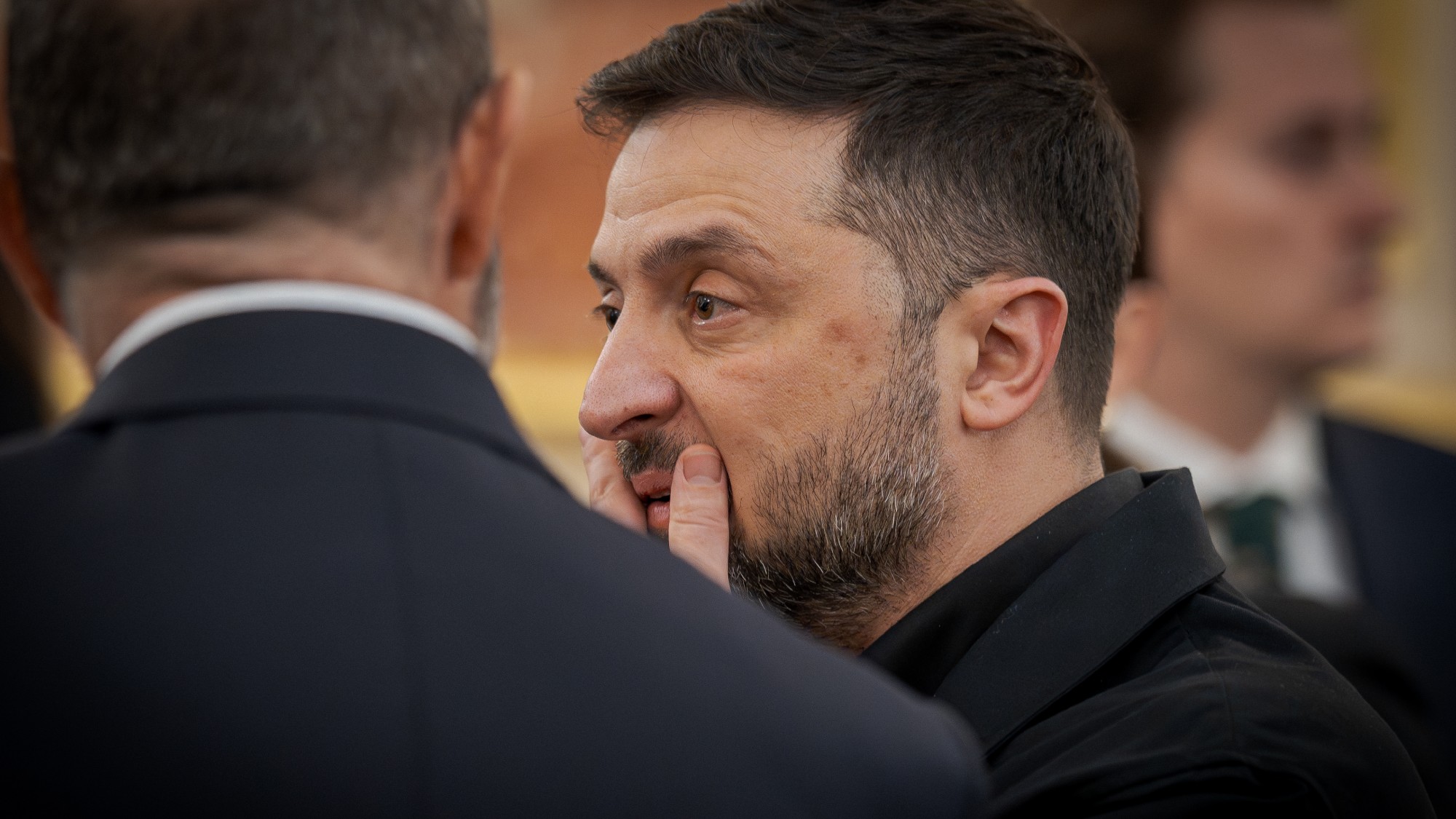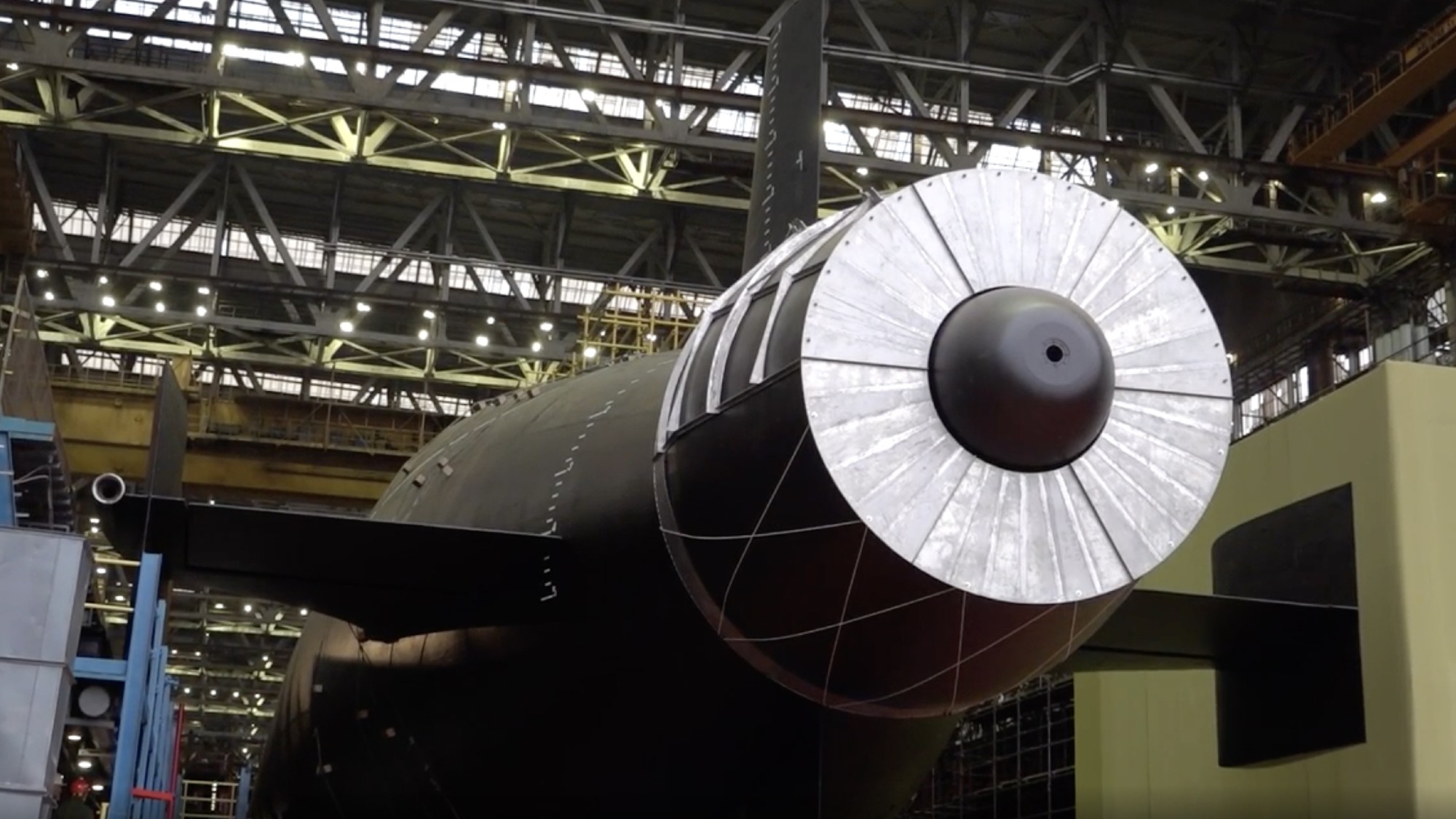How the Donetsk and Luhansk People’s Republics were established
The breakaway regions have been under the control of pro-Russian separatists since 2014

Control of the Donbas is now a key objective for Russian forces as the invasion of Ukraine drags into its fourth month.
About a third of the Donbas is already under the control of pro-Russian separatist forces in the breakaway regions of the Donetsk People’s Republic (DPR) and Luhansk People's Republic (LPR). Russian President Vladimir Putin recognised the DPR and LPR as “sovereign” states in February, providing him with a pretext to invade Ukraine.
After Russia’s early attempts to capture major Ukrainian capital cities such as Kyiv faltered, the fighting is now most fierce in the Donetsk and Luhansk regions of Ukraine.
The Week
Escape your echo chamber. Get the facts behind the news, plus analysis from multiple perspectives.

Sign up for The Week's Free Newsletters
From our morning news briefing to a weekly Good News Newsletter, get the best of The Week delivered directly to your inbox.
From our morning news briefing to a weekly Good News Newsletter, get the best of The Week delivered directly to your inbox.
How and when were the DPR and LPR formed?
The area known as the Donetsk People’s Republic is a breakaway region of Ukraine and was declared a “people’s republic” by pro-Russian separatists in 2014. It is one of two breakaway states in what is known as the Donbas region of Eastern Ukraine, the other being the neighbouring Luhansk People's Republic.
Both regions were declared independent on 12 May 2014 by pro-Russian proxy forces, after Putin annexed the area of Ukraine called the Crimea, “in response to his preferred pro-Moscow presidential candidate, Viktor Yanukovych, having been driven from power by mass protests”, said The Independent.
Since then, the region has been in an almost continuous state of war, with an estimated 14,000 people killed, mostly combatants, in the last eight years of conflict. The DPR and LPR are officially considered terrorist organisations by Kyiv, “although that is not a designation agreed upon by the US, EU or other international bodies”, added the paper.
Who lives there and what is it like?
After eight years, the “republics” have “evolved into totalitarian, North Korea-like statelets”, where “secret police and ‘loyal’ residents monitor every word, phone call and text message”, said Al Jazeera. It is “near impossible” for foreigners and Ukrainians to cross the border into the area.
A free daily email with the biggest news stories of the day – and the best features from TheWeek.com
Visitors have to go into Russia first, a journey which takes some 30 hours and involves fees of $100, as well as bribe officials at times, said the news site.
There have been reports of grave human rights abuses in the region, including the “widespread use of torture”, according to Ivar Dale, a senior policy adviser with the Norwegian Helsinki Committee, a human rights watchdog group.
Civil and political rights are also severely restricted. “You could say that the political repression in Russia is doubly felt in Donetsk and Luhansk and other areas effectively under control of the Putin regime,” Dale told Al Jazeera in February, just after the invasion began.
The region is broadly Russian speaking, but it seems they are “no longer pro-Russian”, according to the BBC. One Ukrainian opinion poll taken in May 2022 suggested 82% of Ukrainians in territory seized by Russia since the 24 February invasion had a negative attitude to Moscow.
What countries recognise the region?
All UN member states, apart from Russia, consider the DPR and LPR to be a legal part of Ukraine, and not independent states. However, Syria has expressed support for the recognition of the breakaway regions, reported Reuters. Nicaragua, Belarus and Venezuela have similarly done so.
What is happening in the Donbas now?
When Russian forces invaded Ukraine in February it “hoped to envelop Ukrainian forces in Donbas in a big pincer movement, driving north from the Sea of Azov coastline and south from Kharkiv to converge on the city of Dnipro”, explained The Economist. However, that “ambitious manoeuvre” has proven to be “beyond Russia’s depleted forces”, said the magazine, and they have now “resorted to a more modest pincer” and hope to capture a smaller area of land that juts into Russian-held territory.
The city of Sievierodonetsk, in the Luhansk region, lies at the eastern edge of this pocket of land and is effectively the gateway to the Donetsk province, said The Guardian. The Russian military has now “shifted the bulk of its military efforts” into capturing the city, with the hopes of going on to capture its twin city of Lysychansk. Capturing the cities would give Russia “full control” over the Luhansk region, as well as giving Russian forces “the possibility to focus its offensive on Donetsk”, said the paper.
The fight for Sievierodonetsk “is turning into one of the war’s bloodiest battles” and a win for Russian forces would be a potential “turning point” for Russia’s attempt to take full control of the Donbas - much of which is already controlled by Russian-backed separatists in the DPR and LPR. If it was able to capture the area, Russia would have, in many ways, completed its initial stated aim of liberating the Donbas. The region would then likely be annexed and become part of Russia.
Russian forces are now believed to control “about 80%” of the city, which was fully cut off earlier this week after the last bridge into it was destroyed, said CNBC.
-
 Political cartoons for December 20
Political cartoons for December 20Cartoons Saturday’s political cartoons include drowning rats, the ACA, and more
-
 5 fairly vain cartoons about Vanity Fair’s interviews with Susie Wiles
5 fairly vain cartoons about Vanity Fair’s interviews with Susie WilesCartoon Artists take on demolition derby, alcoholic personality, and more
-
 Joanna Trollope: novelist who had a No. 1 bestseller with The Rector’s Wife
Joanna Trollope: novelist who had a No. 1 bestseller with The Rector’s WifeIn the Spotlight Trollope found fame with intelligent novels about the dramas and dilemmas of modern women
-
 Is conscription the answer to Europe’s security woes?
Is conscription the answer to Europe’s security woes?Today's Big Question How best to boost troop numbers to deal with Russian threat is ‘prompting fierce and soul-searching debates’
-
 Trump peace deal: an offer Zelenskyy can’t refuse?
Trump peace deal: an offer Zelenskyy can’t refuse?Today’s Big Question ‘Unpalatable’ US plan may strengthen embattled Ukrainian president at home
-
 Vladimir Putin’s ‘nuclear tsunami’ missile
Vladimir Putin’s ‘nuclear tsunami’ missileThe Explainer Russian president has boasted that there is no way to intercept the new weapon
-
 The Baltic ‘bog belt’ plan to protect Europe from Russia
The Baltic ‘bog belt’ plan to protect Europe from RussiaUnder the Radar Reviving lost wetland on Nato’s eastern flank would fuse ‘two European priorities that increasingly compete for attention and funding: defence and climate’
-
 How should Nato respond to Putin’s incursions?
How should Nato respond to Putin’s incursions?Today’s big question Russia has breached Nato airspace regularly this month, and nations are primed to respond
-
 Russia’s war games and the threat to Nato
Russia’s war games and the threat to NatoIn depth Incursion into Poland and Zapad 2025 exercises seen as a test for Europe
-
 What will bring Vladimir Putin to the negotiating table?
What will bring Vladimir Putin to the negotiating table?Today’s Big Question With diplomatic efforts stalling, the US and EU turn again to sanctions as Russian drone strikes on Poland risk dramatically escalating conflict
-
 The mission to demine Ukraine
The mission to demine UkraineThe Explainer An estimated quarter of the nation – an area the size of England – is contaminated with landmines and unexploded shells from the war